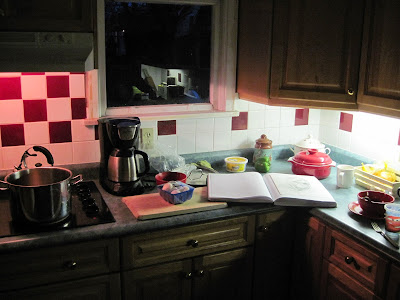Resettlement

"Because you can't beat the bloody system ... in a month there'll be no mail boat, no coastal boat service. That's all part of it. And when its all over they can sit behind their polished desks and congratulate themselves that they've saved another poor fisherman from poverty. In the mean time I've sold my house and gear for a tenth of what it is worth; I've slaughtered all my livestock, and I'm leaving behind fifty one years of my life. But that's not their worry." From The Last Summer - a short story by Jeanne Rogers Study for Resettlement Road, oil on copper, 12" x 14", Steven Rhude Steven Rhude, Wolfville, NS













